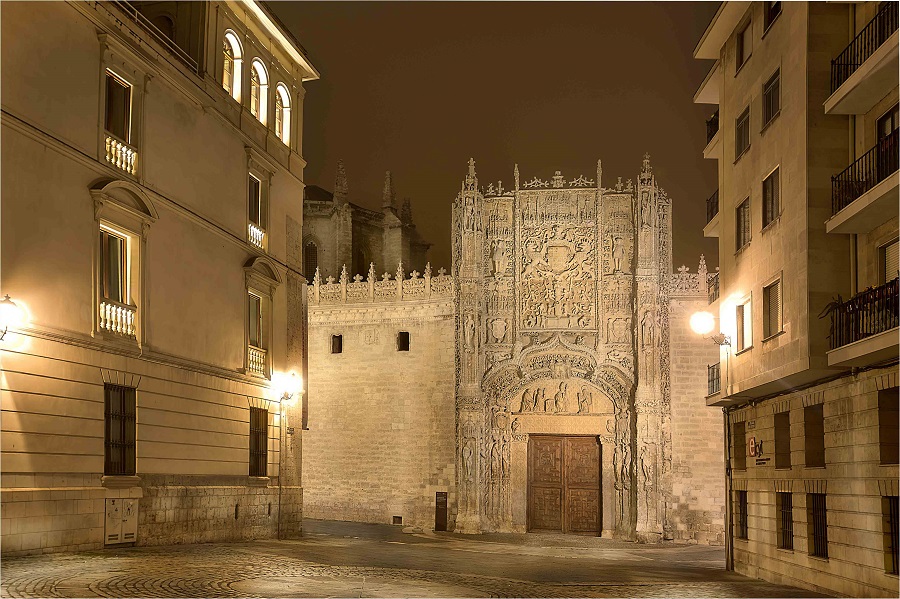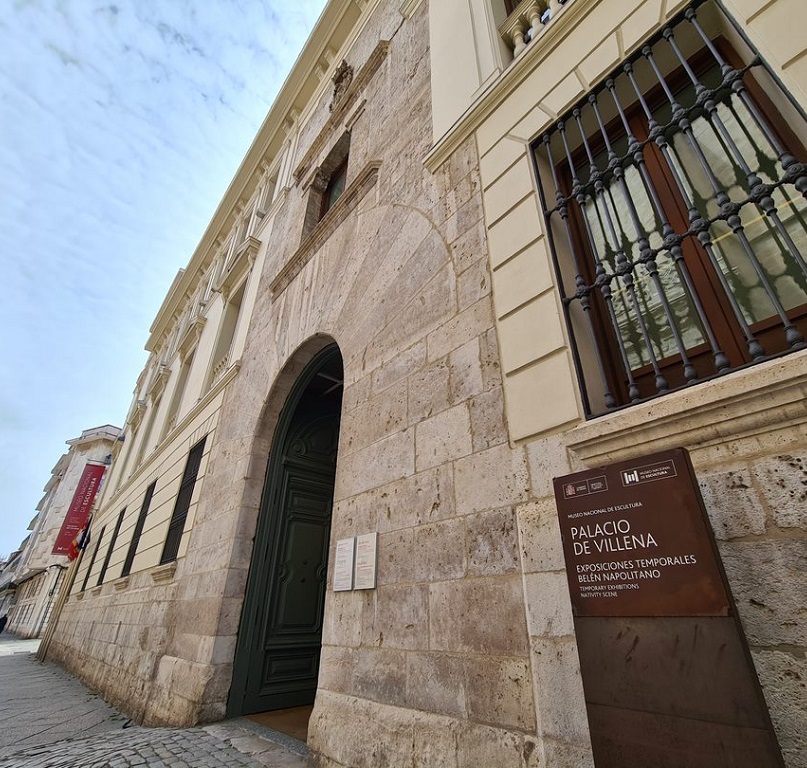Lugares - monumentos - Palacio del Marqués de Villena
Breadcrumb
Breadcrumbs
Asset Publisher
Seminary School of Saint Gregory

Discover its enigmatic façade
It is an architectural work from the end of the 15th Century, under the guidance of Fray Alonso de Burgos, confessor of the Catholic Monarchs and Bishop of Palencia.
Its monumental façade replete with decorative and sculptured elements attributed to Gil de Silóe is worth noting. With Fray Alonso before the Pope in the tympanum and St. Dominic and St. Paul at the sides.
The buttresses are decorated with warriors. There are also angels with the armorial bearings of the founder. In the centre piece there is a pomegranate tree sheltering the arms of the Catholic Monarchs with a pomegranate in the top representing their conquer (so it is dated after 1492).
The design of the chapel, where the bishop is buried, is attributed to the architects Juan Guas and Juan de Talavera, starting in 1484. In 1499 a sacristy by Simón de Colonia was attached to it. Now it is state property and houses since 1933 the National Scultpture Museum.
Navigation Menu
Asset Publisher
Calle Cadenas de San Gregorio, 2
Telephone:983 30 88 10
Web site:http://www.mecd.gob.es/mnescultura
Asset Publisher
LOCATION
Widget tiempo Valladolid
Media Gallery
Valladolid seen through the eyes of its inhabitants and tourists
marquesvillena.jpg
marquesvillena.jpgpalacio de villena.jpg
palacio de villena.jpgAsset Publisher
Palace of the Marquis of Villena

Discover the Valladolid of the Court
The Palace of the Marquis of Villena was built in the 16th century, but due to successive renovations that have adapted it to the taste of each era, it has lost its original appearance. Even the towers were added to the complex in the 19th century, along with ornamentation reminiscent of the Royal Palace.
The only surviving original elements are those framed in the entrance: a slender door with a semicircular arch, the window that overlooks it, and the stone-carved coat of arms.
Since 1982, it has been one of the venues of the National Museum of Sculpture, where the magnificent Neapolitan Nativity Scene is displayed.
